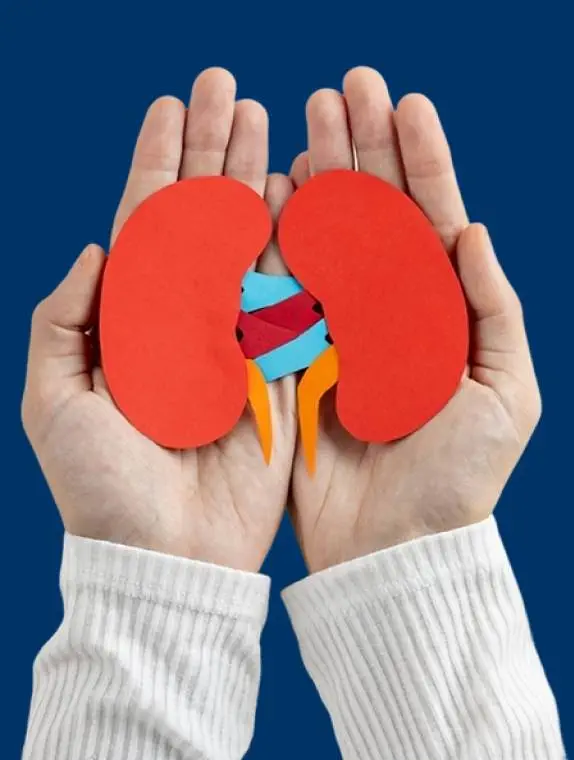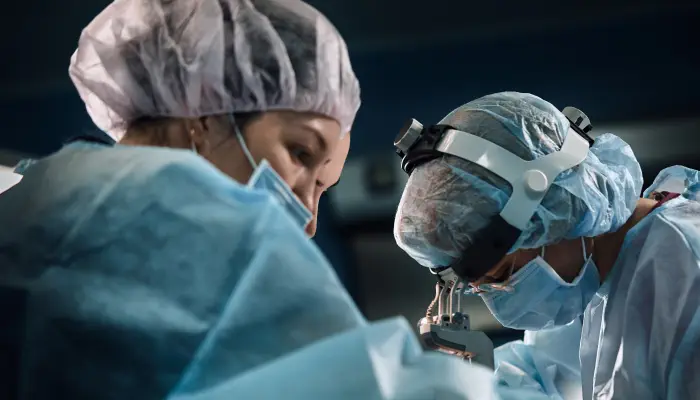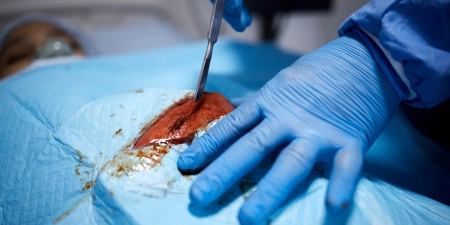Robotic Reconstructive Surgeries

Robotic Reconstructive Surgery: Pioneering Excellence
Robotic reconstructive surgeries are revolutionising the landscape of modern medicine, merging cutting-edge technology with the skilled hands of experienced surgeons to tackle intricate medical challenges. These minimally invasive procedures utilise state-of-the-art robotic-assisted systems, which empower surgeons to operate with remarkable precision, control, and flexibility.
Robotic reconstructive surgeries, which repair damaged tissues, organs, or structures, are making waves across various medical fields, including urology, gynaecology, and general surgery.
Dr. Aarthy, the leading robotic urologist in Chennai, with her specialised training and extensive experience in robot-assisted procedures, masterfully blends surgical expertise with the latest advancements in technology.
When is Robotic Reconstructive Surgery the Right Choice?
Dr. Aarthy may recommend robotic reconstructive surgery for the following medical scenarios:
Precision Healing Redefined

- Before Surgery
- What to Expect?
- Post-Surgical Care
Robotic Reconstructive Surgery: What to do Before Surgery?
Adhere to all the instructions given by your surgeon regarding your surgery-related dietary modifications and medication adjustments.
Inform Dr. Aarthy about your current health conditions and medication routine, including your supplement intake.
Quit your smoking and alcohol consumption since these habits can interfere with your anaesthesia administration and delay healing.
Ask a family member or friend to help you during your recovery, particularly in the initial days following the procedure.
Undergo blood tests, diagnostic scans and other diagnostic evaluations to confirm your fit for surgery.
Robotic Reconstructive Surgery: What to Expect
Your surgeon makes small incisions to insert surgical instruments and a high-definition camera, enabling them to clearly visualise the surgical site and perform the procedure with better control.
Your surgeon performs the surgery by operating the robotic system from a console. The system’s hand and foot controls allow them to manipulate the robotic arms with dexterity and a greater range of motion. It will also mimic the surgeon’s movements and turn them into precise actions.
The high-definition 3D camera lets your surgeon view the surgical site with an enlarged perspective. The detailed visualisation plays a significant role in your surgeon’s precision during the procedure.
Advanced technology allows surgeons to perform highly complex procedures with smaller incisions, as opposed to fully opening the surgical site. This minimal approach minimises tissue damage and reduces the risk of surgical complications.
The robotic system’s precision and visualisation make it easy for surgeons to reconstruct damaged bladders, repair internal structures, and reshape tissues and organs during the procedure.
At the end of the procedure, the surgeon removes the camera and the surgical instruments, closes the incision with neat and precise sutures or surgical glue, and covers it with sterile dressing to allow it to heal.
Robotic Reconstructive Surgery: Post-Surgical Care
Surgery is only the first step in recovering from urological conditions. The procedure’s success also depends on how well you follow your doctor’s instructions after the surgery. You should:
Follow your surgeon’s care guidelines carefully. These include information on how to care for your wounds, medications to take, and any activity limitations.
Adhere to your doctor’s prescription and medication instructions to manage post-procedural pain and to promote quicker healing at the incision sites.
Watch out for signs of complications such as infection, swelling, and redness at the incision site. Contact your doctor if you experience any of these symptoms.
Gradually engage in routine physical activities to help your body return to normalcy. Start with light walking to improve blood circulation, but avoid strenuous activities until advised by a surgeon.
Help expedite your recovery by eating a protein, mineral, and vitamin-rich diet. This nutritious food will also help in tissue repair.
Look for high fever, extreme pain, breathing difficulty, or excessive bleeding. Consult your doctor if you experience any of these symptoms.
Refrain from smoking and alcohol intake during your recovery period. These habit restrictions will expedite your recovery.`
Benefits of Undergoing Robotic Reconstructive Surgeries

Easy Procedure
Advanced technology and minimally invasive approaches cause minimal disruption to surrounding tissues, leading to reduced pain and promoting quicker recovery.
Minimum Risk
Improved control minimises the risk of post-surgical complications and leads to safer results.
Unmatched Precision
Superior accuracy and crystal clear visualisation allowing for more precise repairs that enable better outcomes for complex urological conditions and lesser requirement for further interventions.
Pain & Discomfort
Smaller incisions enable easy recovery with less post-surgical pain and discomfort compared to conventional surgeries.
Minimal Scarring
Smaller incisions result in less visible scarring, giving you better cosmetic outcomes and a quicker healing process.
Speedy Recovery
Shorter recovery time due to minimal or nil post-surgical complications enables you to return quickly to your daily routine.
Surgical Outcomes
Robotic surgery provides long-term relief from urological issues, helping you live pain-free with improved quality of life.
Rev Up Your Recovery Journey Today







